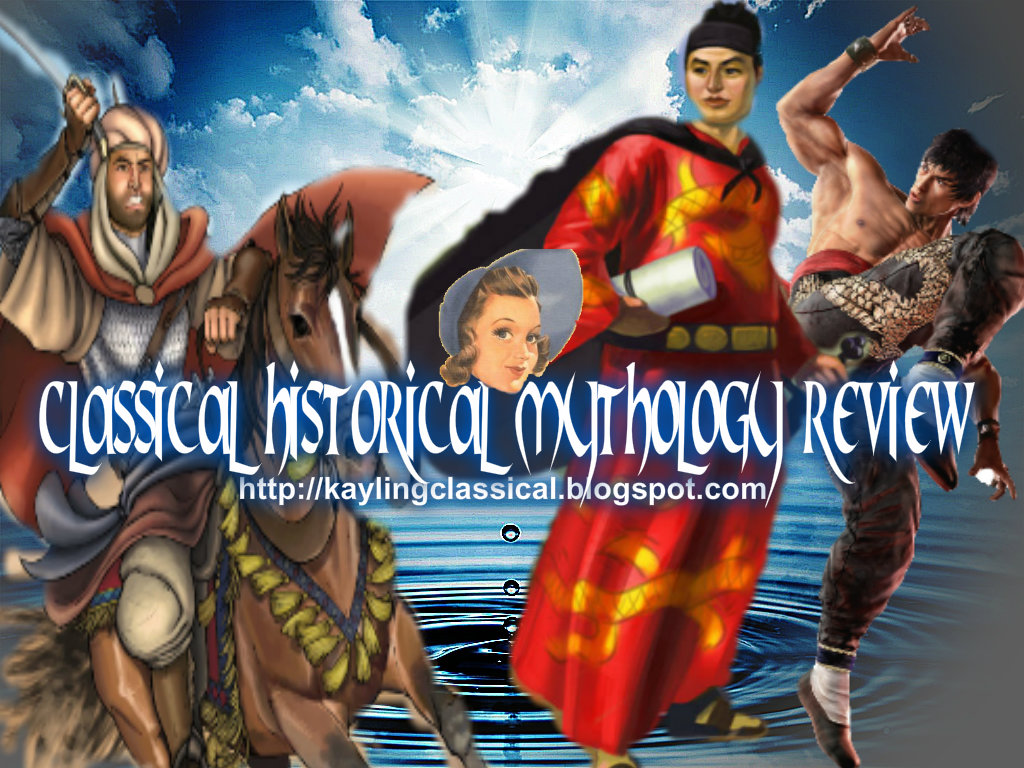The Zhou Dynasty (1046–256 BC) was a Chinese dynasty that followed the Shang Dynasty and preceded the Qin Dynasty. Although the Zhou Dynasty lasted longer than any other dynasty in Chinese history, the actual political and military control of China by the Ji family lasted only until 771 BC, a period known as the Western Zhou. During the Zhou Dynasty, the use of iron was introduced to China, though this period of Chinese history produced what many consider the zenith of Chinese bronze-ware making. The dynasty also spans the period in which the written script evolved into its modern form with the use of an archaic clerical script that emerged during the late Warring States period. According to Chinese legend, the Zhou lineage began with Emperor Ku and proceeded from him to Qi, Buku, Ju, and then Gongliu, before Gugong Danfu moved the Zhou clan from Bin to an area in the Wei River valley, where they founded a town that became central to the Zhou clan's growing prosperity. Gugong Danfu's son, Jili, fought against the Rong as a vassal of the Shang Dynasty's King Wen Ding until the king killed him. Jili's son, King Wen of Zhou, moved the Zhou capital downstream to Fenghao. Around 1046 BC, Wen's son, King Wu of Zhou, led an army of 45,000 men and 300 chariots across the Yellow River and defeated the Shang King Di Xin at the Battle of Muye, marking the beginning of the Zhou Dynasty.
Western writers often describe the Zhou period as "feudal" because the Zhou's early rule invites comparison with medieval rule in Europe. There were five peerage ranks below the royal ranks, in descending order with common English translations: gōng "duke", hóu "marquis", bó "count", "viscount" (also extensively used as an honorific) and nán "baron". Despite some similarities in the decentralized system there are a number of important differences from medieval Europe. One obvious difference is that the Zhou ruled from walled cities rather than castles. The Chinese term for the Zhou system is fēngjiàn. When the dynasty was established, the conquered land was divided into hereditary fiefs that eventually became powerful in their own right. The fiefs or states themselves tended to become feudally subdivided. At times, a vigorous duke would take power from his nobles and centralize the state. Centralization became more necessary as the states began to war among themselves and decentralization encouraged more war. If a duke took power from his nobles, the state would have to be administered bureaucratically by appointed officials. The lowest rank of the Zhou ruling class was called Shi.
When a dukedom was centralized these people would find employment as government officials or officers. In contrast to Western chivalry, the Shi was expected to be something of a scholar. Being appointed, they could move from one state to another. Some would travel from state to state peddling schemes of administrative or military reform. Those who could not find employment would often end up teaching young men who aspired to official status. The most famous of these was Confucius, who taught a system of mutual duty between superiors and inferiors. In contrast, the Legalists had no time for Confucian virtue and advocated a system of strict laws and harsh punishments. The wars of the Warring States were finally ended by the most legalist state of all, Qin. When the Qin Dynasty fell and was replaced by the Han Dynasty, many Chinese were relieved to return to the more humane virtues of Confucius.
The early Western Zhou supported a strong army, split into two major units: "the Six Armies of the west" and "the Eight Armies of Chengzhou". The armies campaigned in the northern Loess Plateau, modern Ningxia and the Yellow River floodplain. The military prowess of Zhou peaked during the 19th year of King Zhao's reign, when the six armies were wiped out along with King Zhao on a campaign around the Han River. Early Zhou kings were true commanders-in-chief. They were in constant wars with barbarians on behalf of the fiefs called guo, meaning "statelet" or "principality." King Zhao was famous for repeated campaigns in the Yangtze areas and died in his last action. Later kings' campaigns were less effective. King Li led 14 armies against barbarians in the south, but failed to achieve any victory. King Xuan fought the Quanrong nomads in vain. King You was killed by the Quanrong when Haojing was sacked. Although chariots had been introduced to China during the Shang Dynasty from Central Asia, the Zhou period saw the first major use of chariots in battle.
In the Chinese historical tradition, the Zhou defeated the Shang and oriented the Shang system of ancestor worship towards a universalized worship, away from the worship of Shangdi and to that of Tian or "heaven". They legitimized their rule by invoking the "Mandate of Heaven," the notion that the ruler (the "Son of Heaven") governed by divine right and that his dethronement would prove that he had lost the Mandate. Disasters and successful rebellions would thus show that the ruling family had lost this Mandate.
The doctrine explained and justified the demise of the Xia and Shang dynasties and, at the same time, supported the legitimacy of present and future rulers. Before conquering Shang, Zhou was a state in Shaanxi. Gernet (1996:51) describes the Zhou state as a "city" which was in contact with the barbarian peoples of the western regions and more warlike than the Shang. The Zhou dynasty was founded by the Ji family and operated from four capitals throughout its history. Sharing the language and culture of the Shang, the early Zhou rulers, through conquest and colonization, established a large imperial territory wherein states as far as Shandong acknowledged Zhou rulership and took part in elite culture. The spread of Zhou bronzes, though, was concurrent with the continued use of Shang-style pottery in the distant regions, and these states were the last to recede during the late Western war. The mandate of heaven was based on rules. The emperor was granted the right to rule by heaven.
During the Zhou Dynasty, the origins of native Chinese philosophy developed, its initial stages beginning in the 6th century BC. The greatest Chinese philosophers, those who made the greatest impact on later generations of Chinese, were Confucius, founder of Confucianism, and Laozi, founder of Taoism. Other philosophers, theorists, and schools of thought in this era were Mozi, founder of Mohism; Mencius, a famous Confucian who expanded upon Confucius' legacy; Shang Yang and Han Fei, responsible for the development of ancient Chinese Legalism (the core philosophy of the Qin Dynasty); and Xun Zi, who was arguably the center of ancient Chinese intellectual life during his time, even more so than iconic intellectual figures such as Mencius.
Established during the Western period, the Li traditional ritual system encoded an understanding of manners as an expression of the social hierarchy, ethics, and regulation concerning material life; the corresponding social practices became idealized within Confucian ideology. The system was canonized in the Book of Rites, Zhouli, and Yili compendiums of the Han Dynasty (206 BC–220 AD), thus becoming the heart of the Chinese imperial ideology. While the system was initially a respected body of concrete regulations, the fragmentation of the Western Zhou period led the ritual to drift towards moralization and formalization in regard to :
- The five orders of Chinese nobility.
- Ancestral temples (size, legitimate number of pavilions)
- Ceremonial regulations (number of ritual vessels, musical instruments, people in the dancing troupe)
China's first projects of hydraulic engineering were initiated during the Zhou Dynasty, ultimately as a means to aid agricultural irrigation. The chancellor of Wei, Sunshu Ao, who served King Zhuang of Chu, dammed a river to create an enormous irrigation reservoir in modern-day northern Anhui province. For this, Sunshu is credited as China's first hydraulic engineer. The later Wei statesman Ximen Bao, who served Marquis Wen of Wei (445-396 BC), was the first hydraulic engineer of China to have created a large irrigation canal system. As the main focus of his grandiose project, his canal work eventually diverted the waters of the entire Zhang River to a spot further up the Yellow River.
Nobles of the Ji family proclaimed Duke Hui of Eastern Zhou as King Nan's successor after their capital, Chengzhou, fell to Qin forces in 256 BC. Ji Zhao, a son of King Nan led a resistance against Qin for five years. The dukedom fell in 249 BC. The remaining Ji family ruled Yan and Wei until 209 BC. Zhou is represented by two stars, Eta Capricorni (Zhōu yī, "the First Star of Zhou") and 21 Capricorni (Zhōu èr, "the Second Star of Zhou"), in "Twelve States" asterism. Zhou is also represented by the star Beta Serpentis in asterism "Right Wall", Heavenly Market enclosure (see Chinese constellation).
Capital :
- Haojing, Luoyang
- Old Chinese
- Chinese folk religion,
- Hundred Schools of Thought
- Monarchy
- Feudalism
- 1046–1043 BC King Wu
- 314–256 BC King Nan of Zhou
- Battle of Mùyě 1046 BC
- Disestablished 256 BC
- 273 BC est. 30,000,000
- 230 BC est. 38,000,000




